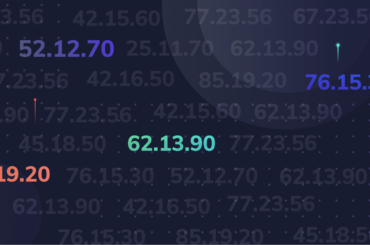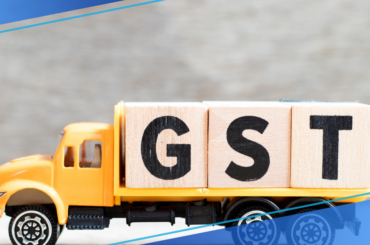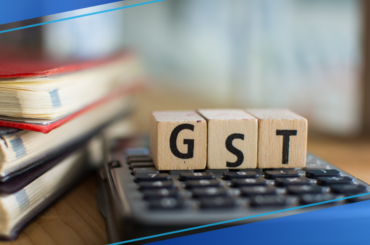[Source]
You may ask, ‘What is a GST e-way bill?’ An electronic way bill (e-way bill) is an electronically generated document required to move goods valued above ₹50,000. GST-registered individuals must generate this document before transporting goods. This makes it important to know how to generate an e-way bill. The validity of an e-way bill is contingent on the type of cargo and the distance it will travel.
Table of Contents
Recent Updates on E-Way Bills Under GST
[Source]
Here are some of the key updates:
-
January 1, 2021, onwards, the e-way bill validity time has been increased to 1 day for every 200 km of travel.
-
Generation of e-way bills via the e-way bill system is restricted for GSTINs that qualify for e-invoicing if the date mentioned is beyond October 1, 2020. This applies to transactions categorised as B2B or export, where the document type is ‘INV’ (invoice).
-
The facility to generate e-way bills is suspended for consignors, consignees, and transporters associated with GSTINs who failed to file GSTR-3B for 2 consecutive months.
-
The system auto-calculates the distance between 2 points using the ‘from’ and ‘to’ pin codes, allowing a 10% margin. If the input distance is shorter than the database value, the e-way bill is issued without warning; otherwise, an error prevents creation.
Importance of E-Way Bill Validity
[Source]
An expired e-way bill can halt goods movement, causing delivery delays and inconvenience. Here are the insights about the e-way bill validity time:
1. Legal Compliance
Adhering to e-way bill validity is crucial. Non-compliance can result in penalties, disrupting of business operations.
2. Smooth Logistics Operations
Valid e-way bills streamline logistics, ensuring route optimisation and on-time deliveries.
3. Regulatory Oversight
The validity of e-way bills allows authorities to monitor goods movement, curb unauthorised transport, and ensure a fair market.
4. Impact on Trade Facilitation:
Adherence to e-way bills supports seamless trade and reduces bureaucratic obstacles.
5. Transparency in Supply Chain:
Valid e-way bills enhance supply chain transparency, offering real-time goods tracking.
6. Prevention of Tax Evasion:
The e-way bill system deters tax evasion by mandating accurate transaction recording and reporting.
How to Determine E-Way Bill Validity Period?
[Source]
Validity periods differ between dimensional cargo and other conveyances. Therefore, it is important to proceed with the e-way bill validity check first before moving the shipment.
Dimensional cargo refers to shipments exceeding Central Motor Vehicle Rules, 1989 dimensions. As highlighted before, the December 2020 amendment extended the validity period from 100 km to 200 km.
Here is how they are calculated:
|
Cargo Type Calculation |
Validity |
|
Over Dimensional Cargo |
1 day for up to 20 km, plus 1 day for each additional 20 km or part thereof. For example, a 45 km journey would have a 3-day validity. |
|
Other Conveyances |
1 day for up to 200 km, plus 1 day for each added 200 km or part thereof. For example, A 350 km journey would have a 2-day validity. |
Dimensional cargo can pose significant safety risks due to its size and weight. It can affect the stability of the transport vehicle and pose dangers to other vehicles. Therefore, obtaining permission from state authorities ensures that safety protocols are in place.
Key points regarding the validity of the e-way bill period –
-
The validity for the first day concludes at midnight of the next day.
-
Validity commences with the first update of the vehicle number in Part B by the supplier/recipient.
-
Validity periods for e-way bills are calculated based on the time of generation, not on subsequent entries in Part B.
How to Determine An Estimated Distance Covered By a Vehicle?
[Source]
The validity of the E-Way Bill relies on the estimated distance between the supplier and recipient; distance estimation is importance for compliance and seamless transportation in the most efficient manner.
Here is how to determine it:
1. Utilising the MAP Feature:
The MAP feature is an integral part of the e-way bill system, used to calculate the distance from the point of dispatch to the point of delivery. You can access this feature through the e-way bill portal, where you can input the supplier’s and recipient’s addresses. The system then calculates the distance using the most efficient routes. For example, the MAP feature will provide the estimated distance if a vehicle is dispatched from New Delhi to Mumbai, considering the best possible routes available.
2. Automatic Distance Calculation Using PIN Codes:
Upon entering the dispatch and delivery PIN codes, the system automatically calculates the distance.
3. Manual Distance Entry
You can input the distance yourself. It is useful when the auto-calculated distance does not reflect the actual travel route due to diversions or specific delivery requirements. However, it is important to note that there is a limitation: the manually entered distance cannot exceed a 10% increase over the auto-calculated distance.
Extension of the E-Way Bill Validity Period
[Source]
In the dynamic landscape of goods transportation, unforeseen circumstances may impede the movement of goods within the stipulated time frame. Recognising this, the provision for the extension of the e-way bill validity time becomes crucial.
Authorised Entities for Extension
A supplier/transporter can extend an e-way bill’s validity in scenarios where transportation is outsourced. The transporter currently assigned to the consignment holds the authority to extend the validity period of the e-way bill.
Procedure for Extension
At the time of expiry, the transporter logs into the e-way bill portal, navigates to the specific bill, and selects the option for extension.
Reasons for Extension
-
Vehicle Changes: Unplanned changes in the vehicle transporting the goods
-
Breakdowns: Mechanical failures or accidents that immobilise the transport vehicle
-
Delays: Delays due to traffic, weather conditions or regulatory checkpoints
Time Limit for Extension
The validity can only be extended within a window of 8 hours before or after the original expiry time.
How to Extend the Validity Period of E-Way Bills: A Step-by-Step Guide
[Source]
-
Log in to the e-way bill portal.
-
On the dashboard, click ‘Extend Validity’ under the ‘E-waybill’ section.
-
Input the e-way bill number you wish to extend.
-
Select ‘Yes’ to confirm.
-
Enter mandatory remarks for the extension.
-
Update the remaining distance, dispatch and delivery locations, and vehicle details.
-
Note that the invoice details and the GSTIN of the supplier and receiver cannot be changed.
-
A new e-way bill number will be issued upon extension.
-
There’s no limit to how many times you can extend the validity.
Here is an illustration to understand this better:
Imagine ABC Transporters have a truck enroute from Mumbai to Delhi. The original validity is nearing expiration when the truck breaks down. The transporter logs into the e-way bill system and enters the required details, including ‘vehicle breakdown’ as the reason for the extension. This ensures that the goods reach their destination without legal issues.
Documentation to Extend the E-Way Bill Validity Period
[Source]
1. Existing E-Way Bill Number
The validity extension process requires the original e-way bill number, which is a unique identifier for the consignment.
2. Reason for Extension
Valid reasons include unforeseen delays like natural calamities or vehicle breakdowns. Documenting the specific cause is essential.
3. Application Form
Some regions mandate a designated form for extension requests, which must be duly filled and submitted.
4. Supporting Documents
Attach relevant documents, such as invoices or transport receipts, that substantiate the reason for the delay.
5. Authorisation
If someone other than the original bill generator is applying, an authorisation letter from the generator is necessary.
6. Fee Payment
A fee may be levied for the extension process. Include proof of payment with the extension application.
Ensure all documentation is accurate and submitted within the prescribed timelines to avoid shipment disruptions.
Conclusion
Understanding the validity of an e-way bill is crucial for the smooth transportation of goods. Recent updates, such as the distance-based validity period, significantly impact businesses. Adherence to validity regulations ensures legal compliance, smooth logistical operations, regulatory oversight, supply chain transparency, and tax evasion prevention. Besides the validity period, knowing about the e-way bill exempted goods is crucial to avoid any confusion.
Frequently Asked Questions (FAQs)
1. How long is an e-way bill valid?
An e-way bill is valid for 1 day for every 200 km of travel for normal cargo. For over-dimensional cargo, it is 1 day for every 20 km.
2. How can I check the current validity status of an e-way bill?
You can check the current validity status of an e-way bill by logging into the portal and using the ‘Search’ option.
3. How do I extend my e-way bill validity after the expiry date?
The transporter can extend the validity of an e-way bill 8 hours before or after its expiry, using the e-way bill portal.
4. What are the consequences of exceeding the maximum allowed distance for an e-way bill?
Exceeding the maximum allowed distance for an e-way bill can result in a penalty of ₹10,000 or the tax sought to be evaded, whichever is greater.
Related Read: How to Cancel E-Way Bill?




